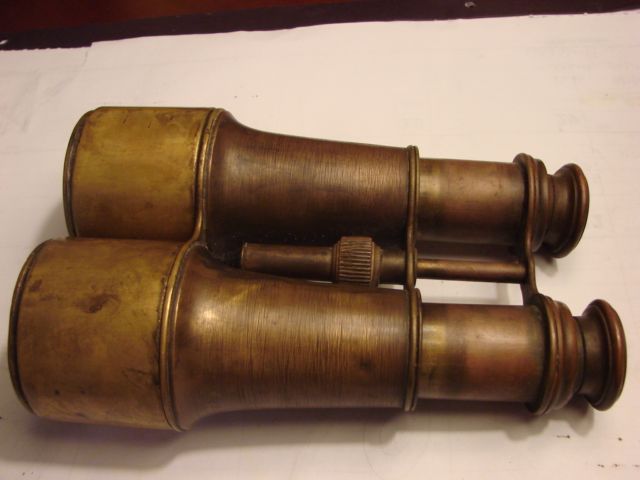I bought a new pair of binos last week, from the incomparable Pelee Wings Nature Store near Point Pelee (the subject of a recent blog post) in Ontario. This is my 7th pair in more than half a century of watching and studying birds, and maybe the best (Swarovski Pocket CL 8×25); certainly the finest for their small size.
Binoculars are such an important tool for bird study that you could not really be a field ornithologist today without them. For too long, I relied on cheap bins until my friend (and at the time, postdoc), Geoff Hill, admonished me for using a toy to do professional work. And he was right—the Bushnell Elites (ca 1993) that he shamed me into buying allowed me to read color bands and examine individual plumage variation like never before.
Binoculars were not invented by or for birders, but eventually became the quintessential, discipline-defining tool for ornithologists. In his 1997 book, Image and Logic, the experimental physicist and science historian, Peter Galison, suggested that tools might be the main engine of scientific revolution, and not ideas as had earlier been suggested by Thomas Kuhn (1962) in his classic book The Structure of Scientific Revolutions.

People studying birds slowly added binoculars to their field kits when they became commercially available but there is no indication that binoculars were in any way revolutionary for ornithology. Binoculars (as opposed to binocular telescopes) came on the market in the mid-1800s and at first figured prominently in military and astronomical applications, but not in bird studies. Even Edmund Selous’s 1900 classic Bird Watching, which arguably invented the hobby, makes no mention of binoculars and the first reference I can find for their use in a bird study does not appear until 1923.
What other iconic bird study tools might have spawned revolutions in ornithology? Certainly many great discoveries about birds have been made with light and electron microscopes, tape recorders, computers and software, and DNA sequencers, but none of these were invented for or used almost exclusively by ornithologists.
Here is my short-list for essential tools that ornithology ‘owns’ in addition to binoculars and spotting scopes—tools that I think revolutionised ornithology:
- metal and colour bands (rings): numbered metal bands were first made and used by a Danish schoolteacher, Hans Christian Mortensen, in 1899; colored markers (silver threads) were used by Audubon in 1803 but color bands as we know them today appear to have been first used in 1909 when Louis Gain (1913) put “some celluloid rings of various colors” on the legs of Adelie Penguins on Petermann Island, Antarctica; the rest, as they say, is history.
- mist nets: mistnets were in widespread use to catch birds for food in Japan for at least three centuries before Oliver L. Austin used them to catch migrants in 1947. (Was he the first ornithologist to use these nets to study birds?) By the 1960s mist nets were in widespread use at banding (ringing) stations in North America and Europe, and had become an essential tool for field ornithology.
- sound spectrographs, sonographs, sonograms: although developed at Bell Labs during WWII to break codes and identify aircraft by their sounds, even the first paper reporting on the technology showed spectrograms of five bird species (Potter 1945). By 1948, bird researchers from all over the world were ordering Sona-graphs from Kay Electric Co. (an offshoot of Bell labs).
- radio transmitters and telemetry/geolocators/PIT and RFID tags/MOTUS: there are myriad electronic devices that can be attached to birds to find out where they are or have been. First used in the early 1970s for bird studies, these devices have been instrumental in determining both local movements and long distance migrations.
- parabola/shotgun microphones: while the principle of focusing sound/light/radiation with a parabola was know for centuries, the first parabolas for bird song recording were made at Cornell University in the 1930s. In the 1960s, Dan Gibson, a wildlife cinematographer from Toronto, marketed a plexiglas version that became an essential tool for recording bird songs.
- DNA fingerprinting (multilocus, microsatellite): first developed by Alec Jeffreys in 1984, and applied immediately to a human immigration case involving disputed family membership (Jeffreys 1985). It took only a couple of years before the first paper was published using DNA fingerprints to evaluate paternity in a wild bird, the House Sparrow (Wetton et al 1987). Paternity analysis certainly revolutionised studies of bird mating systems and mate choice.
- portable color spectrometers (spectroradiometers): while ornithologists are a tiny fraction of the scientists who use relatively inexpensive, portable spectroradiometers in their research, their introduction in the early 1990s revolutionised the study of bird coloration
- ebird: this online checklist system, launched in 2002 by the Cornell Lab of Ornithology and the National Audubon Society is already revolutionising our view of bird distribution and migration patterns in the western hemisphere (example here)
We will explore the history of these tools in more depth later. I am sure there are other tools that have changed the history of bird study, and I welcome your suggestions. With respect to ornithology, we know that both Kuhn and Galison were right (see also Dyson 2012), as the revolutions that have shaped the discipline have been fuelled by both new ideas and new tools.
REFERENCES
Dyson FJ (2012) Is science mostly driven by ideas or by tools? Science 338:1426
Gain L (1913) The penguins of the Antarctic regions. Smithsonian Institution Annual Report 1912:473-482
Galison P (1997) Image and Logic: A material culture of microphysics. University of Chicago Press, Chicago.
Jeffreys AJ (1985) Positive identification of an immigration test-case using human DNA fingerprints. Nature 317:818-819
Kuhn TS (1962) The Structure of Scientific Revolutions. University of Chicago Press, Chicago.
Potter RK (1945) Visible patterns of sound. Science 102:463-470
Selous E (1901) Bird Watching. JM Dent & Company, London.
Wetton JH, Carter RE, Parkin DT, Walters D (1987) Demographic study of a wild house sparrow population by DNA fingerprinting. Nature 327:147-149
IMAGE: binoculars from http://www.civilwarmedicalbooks.com/civil_war_optics.html